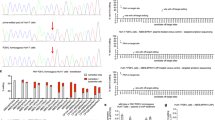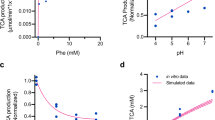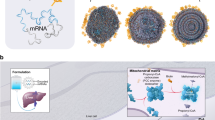Abstract
SINCE the demonstration of the primary enzymatic defect in phenylketonuria (PKU) several models have been suggested for this metabolic disorder. No hypothesis, however, has unified the biochemical and clinical characteristics2.
This is a preview of subscription content, access via your institution
Access options
Subscribe to this journal
Receive 51 print issues and online access
$199.00 per year
only $3.90 per issue
Buy this article
- Purchase on SpringerLink
- Instant access to full article PDF
Prices may be subject to local taxes which are calculated during checkout
Similar content being viewed by others
References
Jervis, G. A., Proc. Soc. Exp. Biol., 82, 514 (1953).
Menkes, J. H., Pediatrics, 39, 297 (1967).
Weber, G., Glazer, R. L., and Ross, R. A., Adv. Enzyme Regulation, 8, 13 (1970).
Bowden, J. A., McArthur III, C. L., and Fried, M., Biochem. Med., 5, 101 (1971).
Dixon, M., Biochem. J., 55, 170 (1953).
Author information
Authors and Affiliations
Rights and permissions
About this article
Cite this article
BOWDEN, J., MCARTHUR, C. Possible Biochemical Model for Phenylketonuria. Nature 235, 230 (1972). https://doi.org/10.1038/235230a0
Received:
Issue date:
DOI: https://doi.org/10.1038/235230a0
This article is cited by
-
Problems related to diet management of maternal phenylketonuria
Journal of Inherited Metabolic Disease (1986)
-
Phenylalaninmetaboliten im Urin von Patienten mit persistierender Hyperphenylalaninaemie
Klinische Wochenschrift (1976)
-
The pigeon, a sensor of lead pollution
Bulletin of Environmental Contamination and Toxicology (1974)



